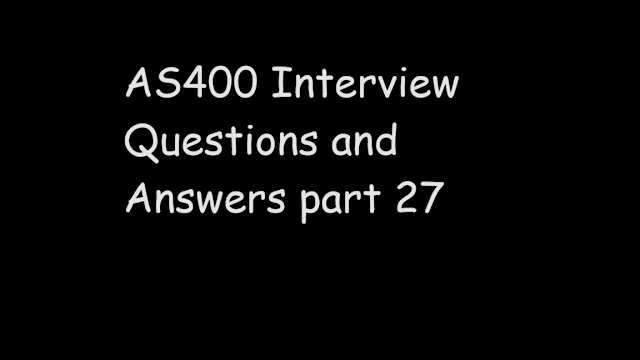 |
| AS400 Interview Questions and Answers part 27 |
Q1:What is the CL command to access Query/400?
Answer: WRKQRY.
Q2:What is the purpose of Overrides?
Answer: The basic purpose of overrides is to temporarily change the attributes of a file. Therefore, you do not need to create a permanent files for every combination of attributes you need. Overrides gives the flexibility to use existing files and change their attributes at run time.
Q3:What is the difference between access path and Dynamic select?
Answer: Access path occurs before the file is read and Dynamic select occurs whenever the program reads the file.
Q4:What is the difference between OPNQRYF and logical file?
Answer: Logical file have permanent object/access path on the system however OPNQRYF creates temporary access path.
Q5:How can you identify end of file in CL program?
Answer: MONMSG(CPF0864).
Q6:What is the difference between SETON LR and RETURN?
Answer: SETON LR will close all the files in the program at the end however, RETURN will keep all the files remain open.
Q7:What is the difference between Fully procedural file and Primary file?
Answer: In primary file, the records will be read and processed from start to end however in fully procedural file, the records can be read and processed in any order.
Q8:How many primary and secondary files allowed in a program?
Answer: Only one primary file and more than one secondary files are allowed in a RPG program.
Q9:What is the purpose of RTVMBRD command?
Answer: to access the member related information
Q10:Define an interactive job?
Answer: